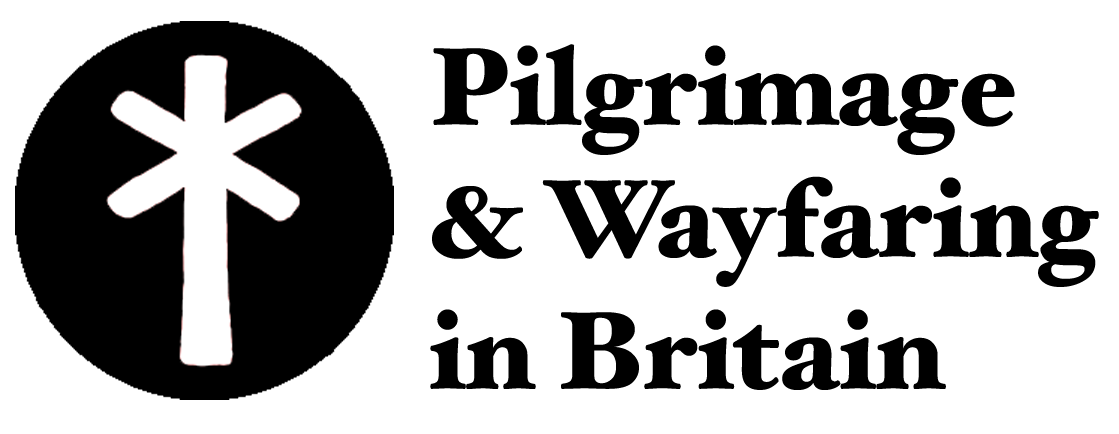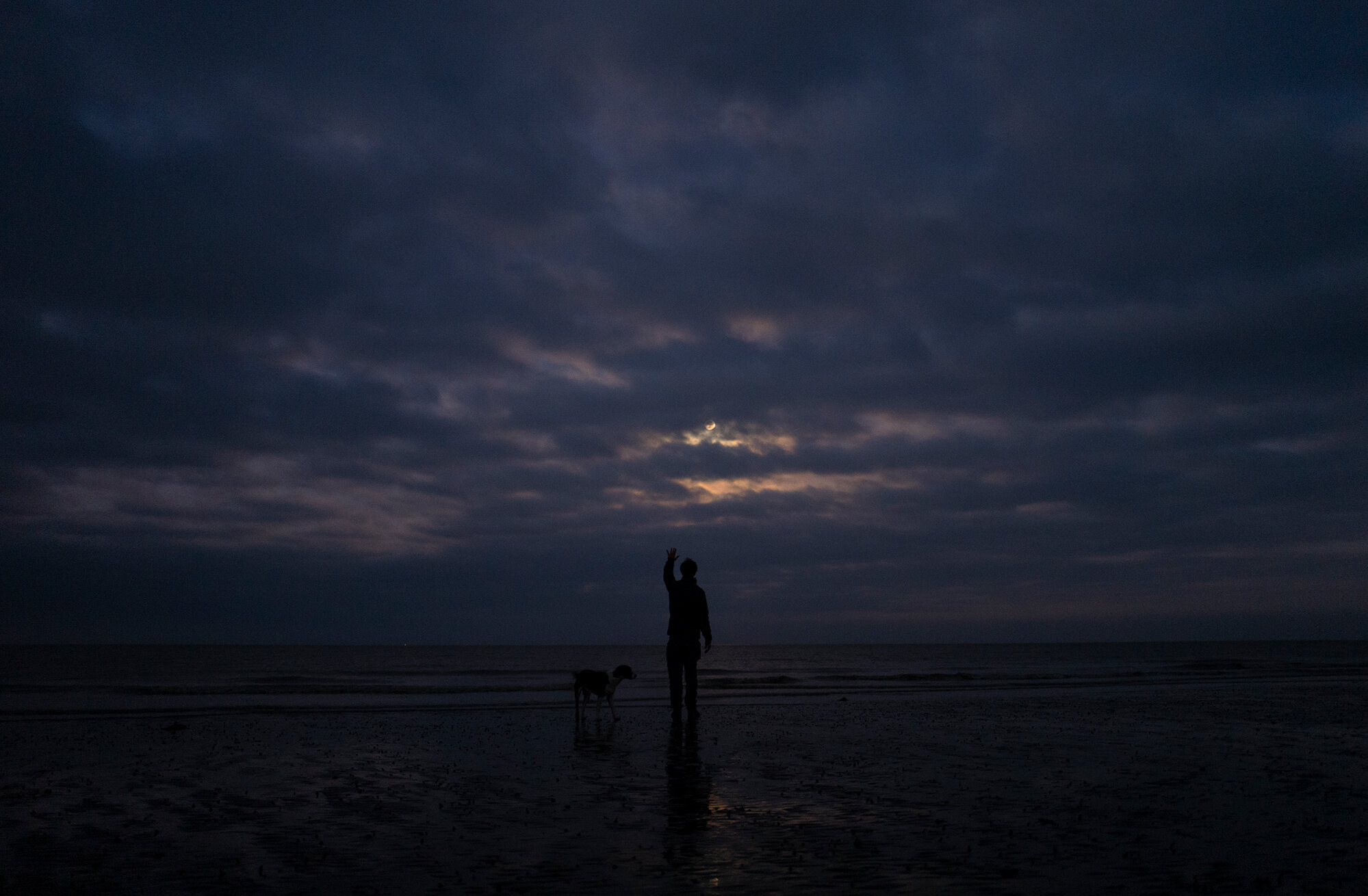Wayfaring or Pilgrimage?
What’s the difference between a wayfarer and a pilgrim?
Wayfarers and pilgrims can appear indistinguishable to the outside (or internal) observer. Both often carry staffs and packs, and both may walk the same paths to the same destinations. So what, if anything, is the difference? And which should you call yourself?
The most obvious difference is that wayfarers always travel on foot, while pilgrims often make their journeys by car and coach. But when a pilgrim chooses to walk, this distinction disappears. So what else is the difference?
Pilgrims seem associated with a spiritual or religious tradition, while wayfarers appear to be less committed to such specifics. Perhaps wayfarers feel that direct experience of mystery is what matters, and a framework of religious identity will limit rather than assists this quest? Is there a more feral gnosticism to wayfarers than pilgrims?
This might be seen to also extend to how each group travels: pilgrims seem to prefer following set-routes, the ‘camino culture’, while wayfarers typically seek their own path.
But these observations are both flimsy and generalised, for many wayfarers follow spiritual traditions, and many pilgrims are commitedly secular. Furthermore, many pilgrims make up their own routes, while wayfarers also happily follow defined paths.
Perhaps the words themselves, in origins and meaning, can help point out more robust differences?
Pilgrimage comes from the Latin ‘peregrinus’, which means ‘outsider/stranger/foreigner’. This implies pilgrims are disconnected from their normal context, set apart from routine, friends and family. This makes pilgrimage a non-normal, minority activity, a journey that is special and distinct. This is an understanding I’ve heard many self-identified pilgrims echo, the hope that their pilgrimage journey is a ‘special’ way to walk.
The word ‘pilgrimage’ also has roots in ‘per ager’, meaning ‘through fields’. This suggests a journey made through the agricultural spaces, away from built-up urban settlements. This makes sense when we imagine Medieval pilgrimage destinations were typically cathedrals and churches where relics were held and venerated, stone buildings in town/city settings. But to reach distant urban destinations, pilgrims would need to travel the green spaces between such places. This understanding also fits today, when many pilgrims express a desire to walk away from roads and industry, and journey through more natural environments.
Wayfaring does not share these specific meanings, as a word. Rather than becoming an ‘outsider’, wayfaring implies a relatively ubiquitous lifestyle. Wayfarers do not necessarily leave their normal life, for wayfaring could well be their normal life. In the Middle Ages, with the roads thronged by perpetual travellers, wayfaring was a common activity, not a special journey set apart. Its followers were diverse and widespread, including traditions such as messengers, traders, musicians & clerics.
Wayfaring also does not imply environmental specifics, whether urban or rural. The way is wide, and includes countryside, town, village, hill and coast. It is hollow-way and moorland track, as well as the great stone highways. ‘Way’ is as non-specific as can be. Wayfaring is very broad church of journey-making on foot.
But ‘faring’ is not so open a term. To ‘fare’ is to do well or badly. This suggests a results-based outlook, a morality of performance/outcome to Wayfaring. A parallel word is ‘seafaring’. In this tradition of travel, you needed sturdy preparation, with a well-crafted boat, a keen crew and strong sails, but once you cast anchor and put to sea, how well you fared would depend on the skill and luck of your captain, as well as the uncontrollable tides and winds. The implication is that to ‘fare’ on a journey is a mixture of preparation, engagement and surrender, which combine to create a good or bad outcome. Even the strongest and most skillfully sailed ship can sink with all souls lost, if a storm rolls in. And if you do make it to land, where you end up is ultimately unknown.
Wayfaring shares these implications. Regardless of preparation and intention, no matter how you plan your journey to go, all hoped-for outcomes are flawed and false, as once you step onto the path, you are ultimately not in control. The way opens before you, but you are not its master. It does not manifest according to your projections, and what it happens to deliver remains the dominant reality. You can’t wish the rain away. To travel within the journey’s whim, you can only do your best, with preparation, skill and luck, to navigate safely. To fare as well as you can, you must step forward and let the path unfold, bringing what it will.
The origin of both words is clearly distinct, but not exclusive. Pilgrimage also has a strong sense of outcome. The typical pilgrim goal is a blessing of health/wholeness, and the journey’s success is therefore judged in these terms. Even total failure, to fare most badly and die on pilgrimage before reaching the hoped-for destination, can be viewed as a positive outcome, a ‘head start’ on the shady path we must all one day walk. Pilgrimage is far from lacking a results-based mentality, or a sense of surrender.
The closer I look, the less I can see light between the two terms.
Perhaps the question ‘Wayfarer or Pilgrim’ is the error? Maybe it’s like asking if I am English, British, European or Human? The words may not be ‘either/or’ classifications.
Both kinds of journey-maker seek a hoped-for destination, for reasons of their own, and they are willing to walk in search of it. And whether they attempt to fit their journey into a pre-arranged spiritual framework, or prefer a more free-form experience, and whether they attempt to follow a set-route or a less rigid path, the journey shall still have its surprises waiting. The Way, whatever your self-classifying outlook at the start, remains ultimately un-guessable. You may set out calling yourself a pilgrim or wayfarer, but perhaps the journey doesn’t really care very much. The path awaits, and despite self-held verbal classifications, how you engage with the blessings and challenges you meet, in their actual unfolding as well as in their subsequent deciphering and interpretation, shall define the outcome you find and how well you have fared.
My strongest sense of a difference between these terms was that of spiritual identity, but ultimately, even this is an illusion, and little more than a cultural veneer that barely covers the unavoidable individuality of our distinct personal relationship with God (by whatever name). The truth of our spiritual identities, their individuality and togetherness, may defy classification as much as these two terms ‘Wayfarer’ and ‘Pilgrim’ defy separation.
And as for pilgrims feeling that their journeys are set-apart and special, when set against the greater context of humanity’s nomadic past, they are in fact deeply normal. Just a few more wayfarers on the path.
So rather than wondering what to call oneself, a more important act might be to step out and begin the journey. As a pilgrim - and as a wayfarer. To fare as best we can, while we might.
See you on the path. Walk well.






